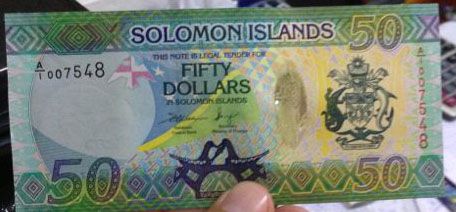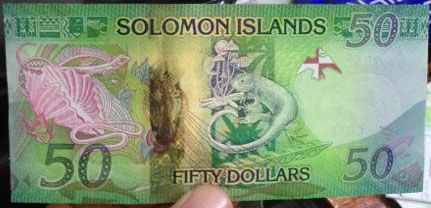 The European Central Bank has officially confirmed that a new 10 euro banknote will be issued in 2014. This will be the second in the new Europa series after the introduction of the new 5 euro earlier this year.
The European Central Bank has officially confirmed that a new 10 euro banknote will be issued in 2014. This will be the second in the new Europa series after the introduction of the new 5 euro earlier this year.
No word yet on the design of the note of course, but looking at the updated design of the new 5 euro note I wouldn't expect big changes.
 Cuba has announced it will abolish the two-currency system currently being used in the country. From the BBC website:
Cuba has announced it will abolish the two-currency system currently being used in the country. From the BBC website:
Since 1994 Cuba has had two currencies, one pegged to the US dollar and the other worth only a fraction of that. The more valuable convertible peso (CUC) was reserved for use in the tourism sector and foreign trade. Now its value will be gradually unified with the lower-value CUP, ending a system resented by ordinary Cubans.
The Cuban economy is almost entirely state-run and the tourism sector has boomed since the collapse of the Soviet Union plunged Cuba into economic isolation and hardship. The two-currency system was supposed to protect Cuba's fragile economy but angered locals paid in the much lower-value CUP and denied access to goods only available for those with convertible pesos.
The policy exacerbated the creation of a two-tier class system in Cuba which divided privileged Cubans with access to the lucrative tourist and foreign-trade sectors from those working in the local economy - all-too-visibly contradicting Cuba's supposedly egalitarian society. The council of ministers has approved a timetable for implementing "measures that will lead to monetary and exchange unification", the official Communist Party newspaper Granma said.
Unification is "imperative to guarantee the re-establishment of the Cuban peso's value and its role as money, that is as a unit of accounting, means of payment and savings", it said. It gave no details of how quickly the change would be implemented, though Reuters news agency quoted Cuban economists as saying it would take about 18 months.
 The Bulgarian National Bank has announced that it will replace the 2 levs note with a coin. The reason for this move is to cut costs. Printing the 2 levs note provides for 1.2 million losses annually. The announcement for the replacement of the note with a coin came together with the announcement that the BNB has signed a joint venture printing deal with François-Charles Oberthur International SA. Oberthur is the worlds third largest banknote producer, printing banknotes for more than 70 countries.
The Bulgarian National Bank has announced that it will replace the 2 levs note with a coin. The reason for this move is to cut costs. Printing the 2 levs note provides for 1.2 million losses annually. The announcement for the replacement of the note with a coin came together with the announcement that the BNB has signed a joint venture printing deal with François-Charles Oberthur International SA. Oberthur is the worlds third largest banknote producer, printing banknotes for more than 70 countries.
No date has been given when the 2 levs note will be replaced.


 It's not every day we hear news from the French Pacific Territories. The special collectivities of France are a group of island nations in the Pacific and its banknotes are issued by the Institut d'Emission d'Outre-Mer (IEOM). The Territories consist of French Polynesia, New Caledonia and Wallis and Futuna. The design of the banknotes hadn't changed much since 1969 but that is about to change. The IEOM has announced that new banknotes with a brand new design will be issued from 20 January 2014.
It's not every day we hear news from the French Pacific Territories. The special collectivities of France are a group of island nations in the Pacific and its banknotes are issued by the Institut d'Emission d'Outre-Mer (IEOM). The Territories consist of French Polynesia, New Caledonia and Wallis and Futuna. The design of the banknotes hadn't changed much since 1969 but that is about to change. The IEOM has announced that new banknotes with a brand new design will be issued from 20 January 2014.
The colorful new banknotes will show elements from the islands' cultural and natural heritage. They will be issued in denominations of 500, 1000, 5000 and 10,000 francs. The old and new notes will circulate side by side for a very limited time until 30 September 2014. From 1 October 2014 only the new notes will be legal tender.
> Flyer with more information
> Video with information about the security features
500 francs
1000 francs
5000 francs
10,000 francs
 The Reserve Bank of India will shortly issue (press release) a new 10 rupees note incorporating the rupee symbol on the obverse and reverse, without inset letter in both the numbering panels, in the Mahatma Gandhi Series-2005 bearing the signature of Dr. Raghuram G. Rajan, Governor, Reserve Bank of India, and the year of printing '2013' printed on the reverse of the banknote.
The Reserve Bank of India will shortly issue (press release) a new 10 rupees note incorporating the rupee symbol on the obverse and reverse, without inset letter in both the numbering panels, in the Mahatma Gandhi Series-2005 bearing the signature of Dr. Raghuram G. Rajan, Governor, Reserve Bank of India, and the year of printing '2013' printed on the reverse of the banknote.
The design of these notes to be issued is similar to the 10 rupees banknotes in the Mahatma Gandhi Series issued in 2005. All the banknotes in the denomination of 10 rupees issued by the RBI in the past will continue to be legal tender.
(images below from the 2009 version of the 10 rupees note)
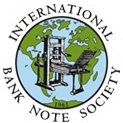 Just a quick reminder for all members of the IBNS to send in your nominations for Banknote of the Year 2013. This annual award has been won by Kazakhstan in 2011 and 2012 and their 2000 Tenge note which was released earlier this year has already been nominated for this year (along with the Mexican 50 peso and the 5 euro).
Just a quick reminder for all members of the IBNS to send in your nominations for Banknote of the Year 2013. This annual award has been won by Kazakhstan in 2011 and 2012 and their 2000 Tenge note which was released earlier this year has already been nominated for this year (along with the Mexican 50 peso and the 5 euro).
If you want some other winner and if you're a member of the IBNS (highly recommanded!) then please visit this page and send in your nominations.
The rules:
Banknotes nominated must have been issued to the public (specimens and non-circulating currencies are inelligble) for the first time during the year of the award, and must have artistic merit and/or innovative security features. When nominating a note, please provide your reasons for nomination, and if possible, a scan of the front and back of the note. Nominations for the award will be accepted up to the 31st January of the following year.
Personally I'm waiting for the new Canadian 5 dollar note which will be issued 7 November of this year and which, in my humble opinion, looks absolutely stunning.
There are countless subjects within the field of collecting banknotes which you can specialize in: one from each country, a specific country, birds, polymer, etc. etc. Coinweek looks at one subject in particular: the collecting of American $1 dollar notes.
 The Reserve Bank of Fiji has won (press release) the Best Regional Banknote of the Year Award for the new flora and fauna series. At the Reconnaissance International Limited Asian Middle East and African High Security Printing Seminar (what a name!) the award was presented to the Deputy Governor of the RBF, mr. Inia Naiyaga.
The Reserve Bank of Fiji has won (press release) the Best Regional Banknote of the Year Award for the new flora and fauna series. At the Reconnaissance International Limited Asian Middle East and African High Security Printing Seminar (what a name!) the award was presented to the Deputy Governor of the RBF, mr. Inia Naiyaga.
The whole series which went into circulation on 2 January 2013 is indeed beautiful and can be admired in this post I wrote in December 2012.
Thanks to a very generous donation I received 21 new banknotes last week. Including two notes from a country I've wanted in my collection for some time: Belgian Congo. Among the notes were some Notgeld issues from Germany's Weimar Republic which I won't list below, mainly because it's not a real part of my collection. They're nice to have but I don't pursue them like 'normal' banknotes and only add them to my collection when I receive them by chance for free.
So the new 'real' banknotes are:
- Sweden, 10 Kronur (P52d)
- Egypt, 5 Piastres (P165a)
- Rwanda, 20 Francs (P6b)
- Rwanda, 100 Francs (P8b)
- Czechoslovakia, 5 Korun (P82a)
- Germany, 5 Mark (P56b1)
- Germany, 10000 Mark (P70)
- Germany, 20000 Mark (P85a)
- Germany, 1 Mark (P192a)
- Belgian Congo, 5 Francs (p13B)
- Belgian Congo, 10 Francs (P14E)
 The USA have finally issued the new version of one of the most used banknotes in the world: the 100 dollar note. There were several problems in the production process but the world now has a new Benjamin.
The USA have finally issued the new version of one of the most used banknotes in the world: the 100 dollar note. There were several problems in the production process but the world now has a new Benjamin.
The new note features several new security features and design updates. Most noticeable are the 3D blue ribbon and the colour changing seal with the Liberty Bell. Below are links to educational material from the official NewMoney.gov site.
The site mba-in-finance.org has compiled some interesting facts about US money. Big image after the click:
Read More
 What at first glance appears to be a bad photoshop job is rumoured to be the new commemorative note from Lebanon. The 50,000 livre note is supposed to come out on Independence Day, 22 November 2013. The pictures below are from banknotenews.com who got them from the eBay-seller mentioned in the watermark.
What at first glance appears to be a bad photoshop job is rumoured to be the new commemorative note from Lebanon. The 50,000 livre note is supposed to come out on Independence Day, 22 November 2013. The pictures below are from banknotenews.com who got them from the eBay-seller mentioned in the watermark.
I don't know about this one. The design seems very amateuristic to say the least. We'll have to wait for an official announcement by the Central Bank of Lebanon I guess.
At the World Paper Money Fair I bought 17 new notes from 12 new countries. I now have 606 banknotes in my collection. Just 6 more countries and I also have 200 countries in my collection! All the new additions from this weekend:
- Bahamas, 1 dollar, P50
- Belize, 5 dollar, P67d
- Cape Verde, 200 escudos, P68
- Central African States, 1000 francs, P102Cg
- Finland, 1 Markka, P98a
- French Pacific Territories, 500 francs, P1b
- Gambia, 5 dalasis, P20a
- Iran, 5000 rials, P150
- Lesotho, 10 maloti, P15f
- Luxembourg, 20 francs, P54a
- Morocco, 10 dirham, P57b
- Slovakia, 20 korun, P20a
- Slovakia, 50 korun, P21a
- Sweden, 20 kronur, P63a
- Tanzania, 20 shillingi, P9
- West African States, 500 francs, P210Bn
- Uganda, 1000 shilling, P49
Last weekend was the bi-annual World Paper Money Fair Maastricht in the lovely town of Valkenburg aan den Geul in the deep, very deep south of the Netherlands. The trip is about 400 km back and forth for me. I've driven those distances before in the USA but 400 km in the Netherlands is quite different from 400 km in the USA.
I was at the fair for the first time last year but I didn't really enjoy myself then because of all the high prices dealers asked for their banknotes. This year I went with different expectations. I had a clear budget, a goal (new countries) and I was determined to just enjoy the expensive banknotes for their looks and concentrate on the cheaper notes for buying.
This proved to be a succes. The first stall I visited and the first beautiful note I looked at was a whopping €12,000 worth! That note was just a little above my budget so I decided to move on. A few hours later I had bought as many notes as my budget permitted and after a lunch in the beautiful neighborhood I drove back home. I will definitely come back in the spring of 2014!
This weekend I visited the World Paper Money Fair Maastricht in Valkenburg a/d Geul. In short: I liked it a lot and I've bought some great new banknotes. A more extensive review will follow tomorrow!
 The Central Bank of the Solomon Islands has issued a new banknote of 50 dollar according to this article. This is the first banknote of a new series. The Bank said the redesigned note is expected to bring a whole new dimension and sophistication in terms of design durability and security features. The note is designed and made bij De la Rue. From their website:
The Central Bank of the Solomon Islands has issued a new banknote of 50 dollar according to this article. This is the first banknote of a new series. The Bank said the redesigned note is expected to bring a whole new dimension and sophistication in terms of design durability and security features. The note is designed and made bij De la Rue. From their website:
"On the front of the note, local basket weave designs are intended to represent the swirling movement of shoals of fish whilst indigenous fauna and flora - including an iguana, lizard and snake - are shown on the back. The most prominent security feature is De La Rue's Optiks super wide security thread with a transparent window."
The picture below from banknotenews.com is the only one I've found so far. What is that with Central Banks and the introduction of new notes? A picture says more than a thousand words!
« Vorige Pagina |
Toon berichten 916-930 van 1227 |
Volgende Pagina »
 The European Central Bank has officially confirmed that a new 10 euro banknote will be issued in 2014. This will be the second in the new Europa series after the introduction of the new 5 euro earlier this year.
The European Central Bank has officially confirmed that a new 10 euro banknote will be issued in 2014. This will be the second in the new Europa series after the introduction of the new 5 euro earlier this year. Cuba has announced it will abolish the two-currency system currently being used in the country. From the
Cuba has announced it will abolish the two-currency system currently being used in the country. From the 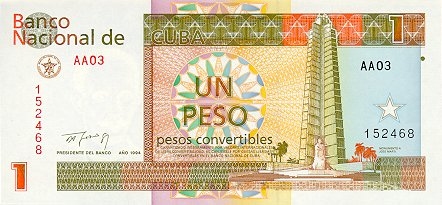
 The
The 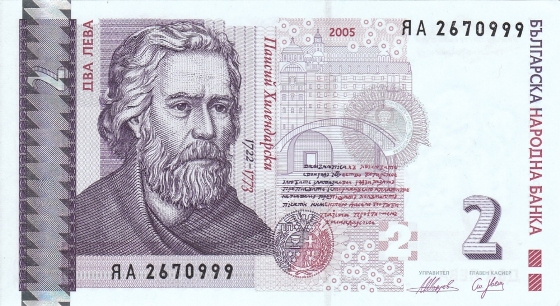


 It's not every day we hear news from the French Pacific Territories. The special collectivities of France are a group of island nations in the Pacific and its banknotes are issued by the
It's not every day we hear news from the French Pacific Territories. The special collectivities of France are a group of island nations in the Pacific and its banknotes are issued by the 
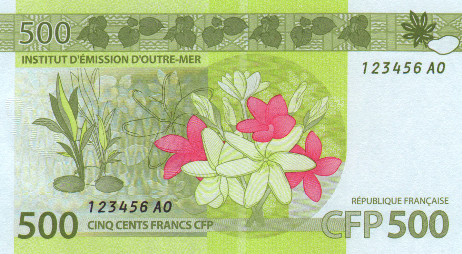
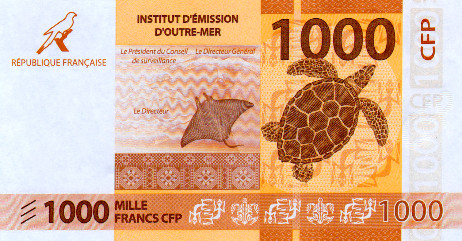
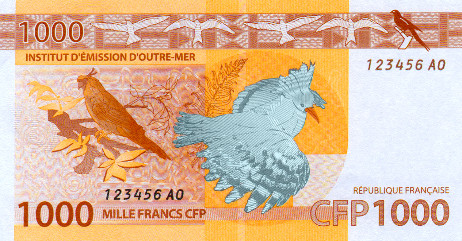
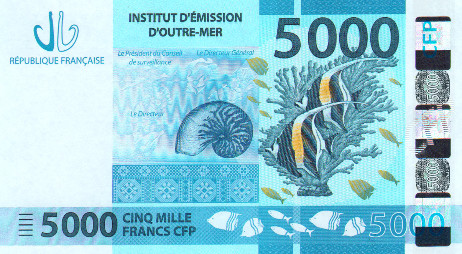
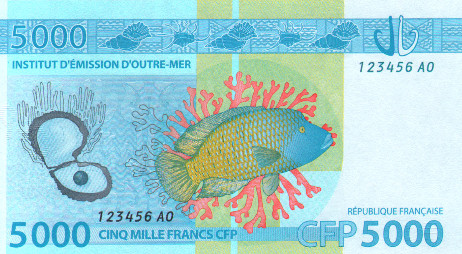
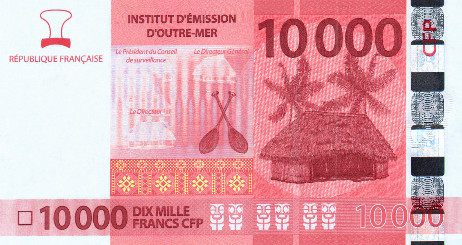
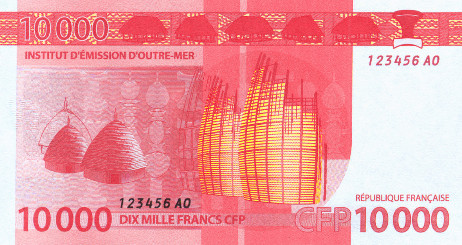
 The
The 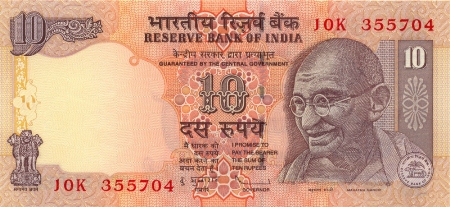
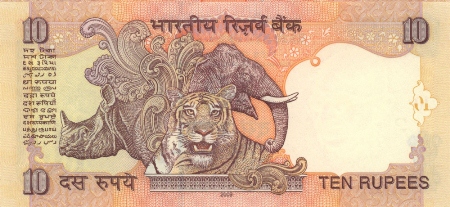
 Just a quick reminder for all members of the
Just a quick reminder for all members of the 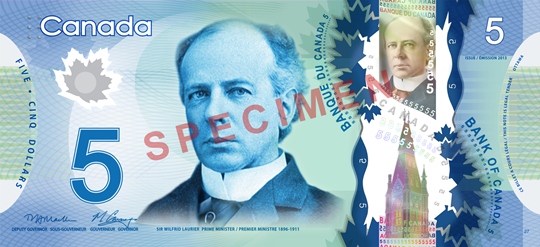

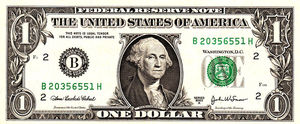
 The
The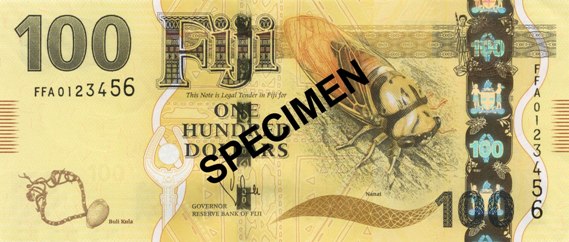
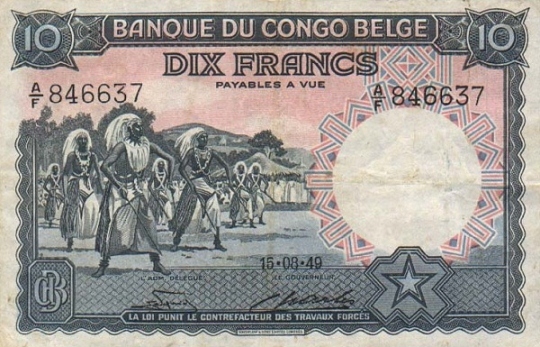
 The USA have finally issued the new version of one of the most used banknotes in the world: the 100 dollar note. There were several
The USA have finally issued the new version of one of the most used banknotes in the world: the 100 dollar note. There were several 
 What at first glance appears to be a bad photoshop job is rumoured to be the new commemorative note from Lebanon. The 50,000 livre note is supposed to come out on Independence Day, 22 November 2013. The pictures below are from
What at first glance appears to be a bad photoshop job is rumoured to be the new commemorative note from Lebanon. The 50,000 livre note is supposed to come out on Independence Day, 22 November 2013. The pictures below are from 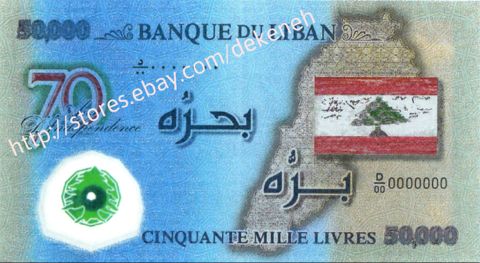
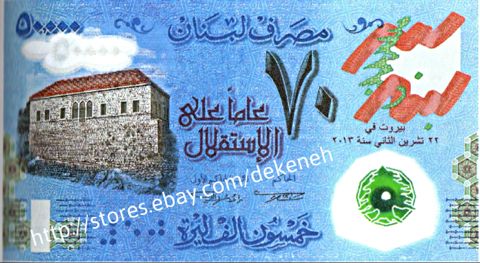
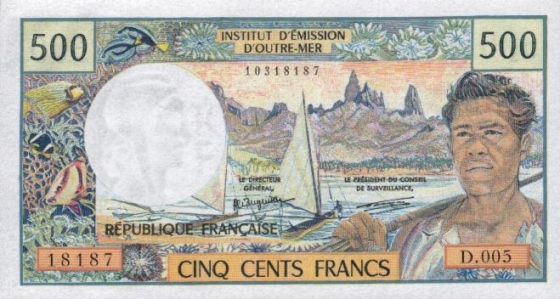
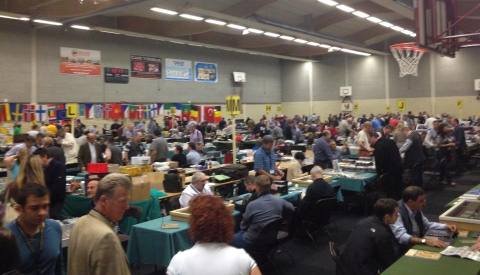
 The
The 